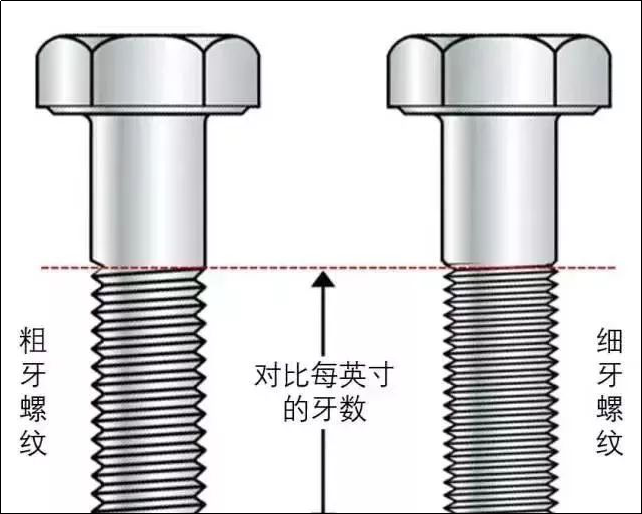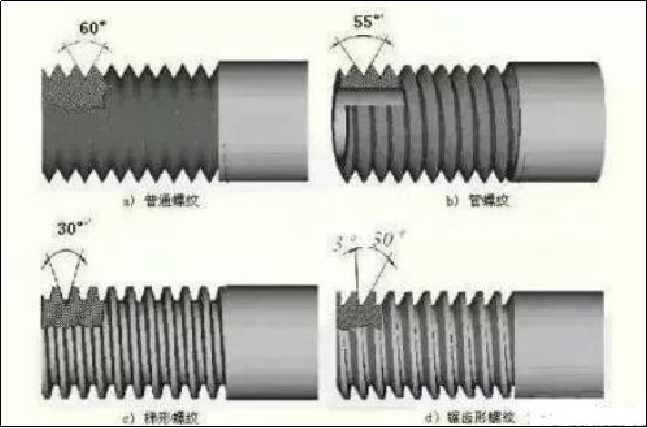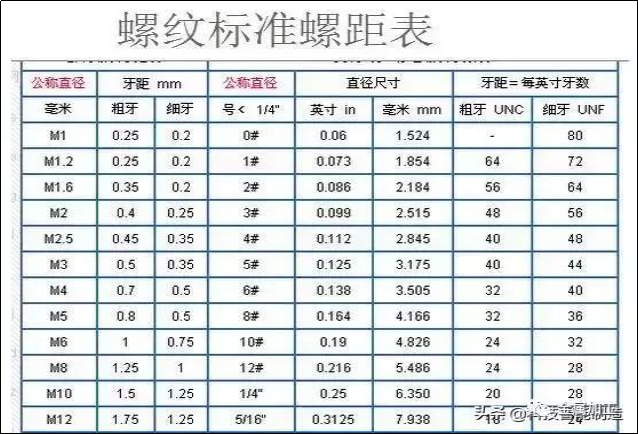How fine is the thread that can be called a fine thread? We might as well define it in this way. The so-called coarse thread can be defined as a standard thread; while the fine thread is relative to the coarse thread. Under the same nominal diameter, the number of threads per inch is different, that is, the pitch is different, and the thickness of the thread is different. The pitch of the thread is large, while the pitch of the fine thread is small. That is to say, for the 1/2-13 and 1/2-20 specifications, the former is a coarse tooth and the latter is a fine tooth. So expressed as 1/2-13UNC and 1/2-20UNF. stainless steel304 part

Since there are two different thread specifications with the same nominal diameter, how to choose coarse thread and fine thread?
Coarse thread
The so-called coarse thread actually refers to the standard thread. Without special instructions, the stainless steel screws and other fasteners we generally buy are coarse threads.
Coarse thread is characterized by high strength, good interchangeability, and there are standards for comparison. Generally speaking, coarse thread should be the best choice;
Compared with the fine thread, due to the large pitch and the large thread lift angle, the self-locking performance is poor. In the vibration environment, it is necessary to install anti-loose washers and self-locking devices. , easily interchangeable;
There is no need to mark the pitch when marking the coarse thread, such as M8, M12-6H, M16-7H, etc., which are mainly used for connecting threads. cnc aluminum part

fine thread
The fine thread and the coarse thread are just the opposite. They are specified to supplement the special use requirements that the coarse thread cannot meet. The fine thread also has a pitch series. And the number of teeth is more, which can reduce the effect of leakage and achieve the effect of sealing. In some precise occasions, fine-toothed stainless steel screws are more convenient for precise control and adjustment.
The disadvantage is that the tensile value and strength are relatively coarse and low, and the thread is easy to damage. It is not recommended to disassemble and assemble multiple times. The matching nuts and other fasteners may be equally accurate, and the size is slightly wrong, which is easy to damage the screws and nuts at the same time.
Fine thread is mainly used in metric pipe fittings of hydraulic system, mechanical transmission parts, thin-walled parts with insufficient strength, internal parts limited by space and shafts with high self-locking requirements. The pitch of the fine thread must be marked to show the difference from the coarse thread. auto component

How to choose coarse thread and fine thread
Coarse thread and fine thread screws are used for fastening.
Fine-toothed screws are generally used to lock thin-walled parts and parts that have high requirements for anti-vibration. The fine thread has good self-locking performance, so the ability to resist vibration and loosening is strong, but due to the shallow depth of the thread, the ability to withstand greater tension is worse than that of the coarse thread.
When no anti-loosening measures are taken, the anti-loosening effect of fine thread is better than that of coarse thread, and it is generally used for thin-walled parts and parts with high requirements for anti-vibration.
When used for adjustment, the fine thread is more advantageous. Disadvantages of fine thread: It is not suitable for application on materials with excessively thick tissue and poor strength. When the tightening force is too large, it is easy to slip.
Anebon Metal Products Limited can provide CNC Machining、Die Casting、Sheet Metal Fabrication service, please feel free to contact us.
Tel: +86-769-89802722 E-mail: info@anebon.com URL: www.anebon.com
Post time: Jun-29-2022
